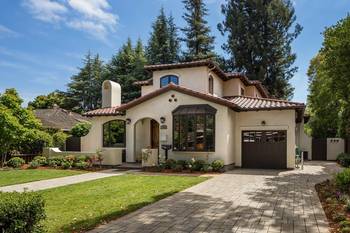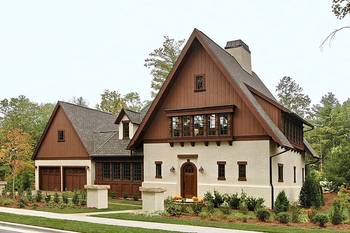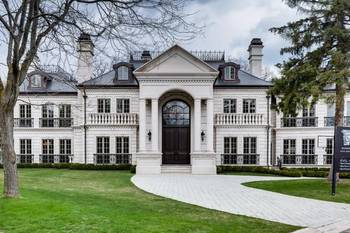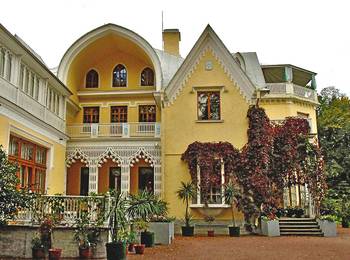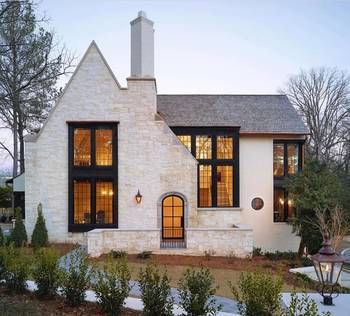ArchReview #165
1
2
3
4
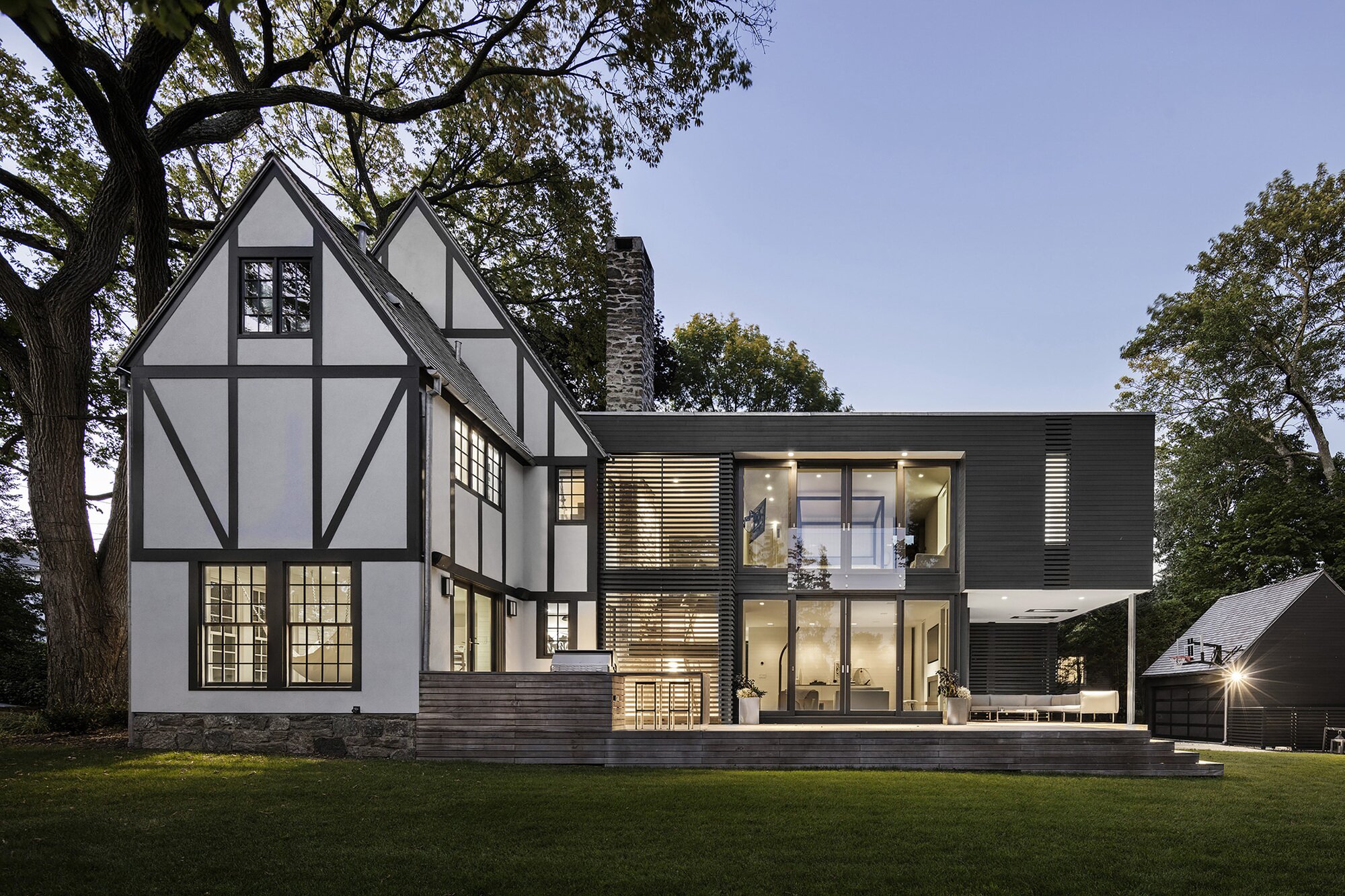
1
This project is an outstanding example of architectural dialog between past and present. The original Tudor house, with its characteristic features (half-timbering, steeply pitched roofs, massive stone chimney), is not imitated, but enters into a bold interaction with a radically modern extension.
The new volume, made of dark cedar, steel and glass, is designed as a light, transparent pavilion, contrasting with the heaviness and relative closedness of the historical part. Horizontal cladding lines, panoramic glazing and cantilevered outriggers emphasize the modern character of the extension and its orientation towards the garden and light.
A key element linking the two eras is the monumental stone chimney, which the new structure delicately bypasses and integrates into its composition. The project demonstrates how history can be respected while creating a functional and aesthetically expressive contemporary space.2
Historic Context: The preserved portion of the Tudor-style house, with its recognizable half-timbering and steeply pitched roofline, serves as a solid anchor and starting point. Its enclosed character and traditional details contrast vividly with the lightness and openness of the new addition.3
Modern Pavilion: A horizontally oriented volume with maximum glazing and dark wood cladding (including areas with louvers/lamellae). It opens up the interior spaces towards the landscape, providing an abundance of light and a direct connection to the terrace and garden. A cantilevered second floor extension creates a covered seating area below.4
Junction point: The massive stone chimney of the original house becomes a visual and semantic hinge between old and new. The modern structure embraces it rather than destroys it, emphasizing continuity and creating a complex spatial intrigue at the junction of the volumes.Facade #19101 from Archi.Capital base.

